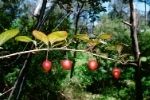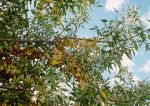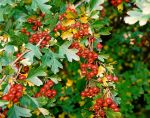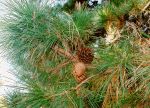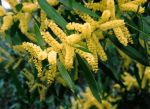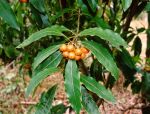Weed trees are often aggressive invaders which have a high seed germination rate. Many species grow rapidly and quickly take over an area, allowing them to outcompete native species.
On Council land, mature weed trees are often allowed to remain in parklands because of the canopy benefits that they provide, although care is taken to remove seedlings and plant more appropriate species for the future. If you have a weed tree in your garden you may wish to do the same and recognise the benefits of its canopy but ensure seedlings are controlled.
Recent changes to the Planning Scheme mean that species previously exempt as weeds under SLO9 have changed and may now require a planning permit for removal. Please check with council before you remove any trees from your property.
| Weed | Photo |
|---|---|
|
Box Elder - Acer negundo A fast growing, short-lived tree featuring compound leaves arranged oppositely. Its small yellow-green flowers emerge in early spring, with staminate flowers forming in clusters. Numerous winged seeds. |
|
|
Cape Wattle - Paraserianthes lophantha A small tree reaching around 8m in height, known for its rapid growth. It features long bipinnate leaves, reaching up to 20 cm. Greenish-yellow flowers start blooming in early June and continue through winter until September. After flowering, it produces dark seed pods, measuring up to 10 cm in length. |
|
|
Cherry Plum - Prunus cerasifera A compact deciduous tree, reaching up to 5m, with oval-shaped green or purple leaves. Produces pink or white flowers in early spring and red or yellow fruit in the summer. Known to compete with native vegetation. |
Full Size Image ( JPG 347.29KB) 
|
|
Cootamundra Wattle - Acacia baileyana A compact tree standing 5-8m tall, characterised by its unique feathery blue-grey foliage. It bears plentiful sprays of golden flowers during winter. Known for colonising native bushland, especially in drier areas. |
Full Size Image ( JPG 312.25KB) 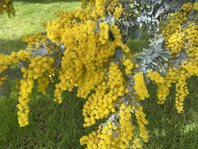
|
|
Cotoneaster - Cotoneaster spp. (all species) Evergreen shrubs or trees with green oval leaves and pale undersides. Two invasive species are present in the area. Leaf size may vary, but other characteristics are largely similar. Produces small white flowers in spring, followed by plentiful red fruits. |
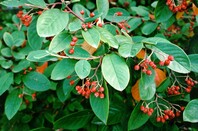
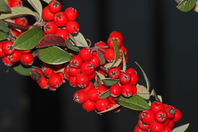
|
|
Desert Ash - Fraxinus angustifolia A sizable spreading tree typically reaching 10-12m in height, shedding its leaves during autumn. Its dark brown growing buds are prominent features. The compound leaves, ranging from 14-25 cm in length, consist of 5-13 elongated leaflets with serrated edges. Its flowers, inconspicuous and lacking sepals or petals, appear in small branched clusters. |
Full Size Image ( JPG 601.45KB) 
|
|
Common Hawthorn - Crataegus monogyna An upright, deciduous shrub that can grow up to 7m tall, resembling a tree. It has thorny branches and small, deeply lobed, and serrated bright green leaves. Produces white or occasionally pink flowers in spring, followed by red berries in autumn. |
|
|
Mirror Bush - Coprosma repens A compact shrub or small tree with shiny, broad leaves. These leaves are oval to oblong, measuring 2–8 cm in length and 10–50 mm in width. Its fruit are egg-shaped, about 1 cm in diameter, and range in colour from orange to red. |
Full Size Image ( JPG 333.76KB) 
|
|
Privet - Ligustrum spp. (all species) Evergreen shrubs or trees with green oval leaves. Produces small white flowers in spring, followed by abundant red fruits that darken to black. |
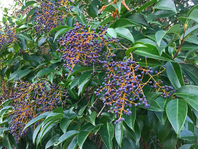
|
|
Radiata Pine/Monterey Pine - Pinus radiata A tall evergreen softwood tree, reaching up to 30m in height. It features dark green Needs photole-like leaves in clusters of three. The large seed-bearing cones at the branch tips take two to three years to mature. |
|
|
Sallow Wattle - Acacia longifolia A small tree, up to 8m tall, characterised by its long, slender foliage hanging from drooping branches. Bears yellow spike flowers in early spring. |
Full Size Image ( JPG 275.93KB) 
|
|
Sweet Pittosporum - Pittosporum undulatum A tall evergreen softwood tree, reaching up to 30m in height. It features dark green Needs photole-like leaves in clusters of three. The large seed-bearing cones at the branch tips take two to three years to mature. |
|
|
Willow - Salix spp. (all species) Deciduous trees or shrubs known for their small seeds, each with long silky hairs resembling a parachute, aiding in dispersal. Most species feature long and narrow leaves with finely toothed edges and a lighter underside. Additionally, willow trees often develop extensive root mats on the soil's surface or in shallow water and slow-moving streams. |
|










